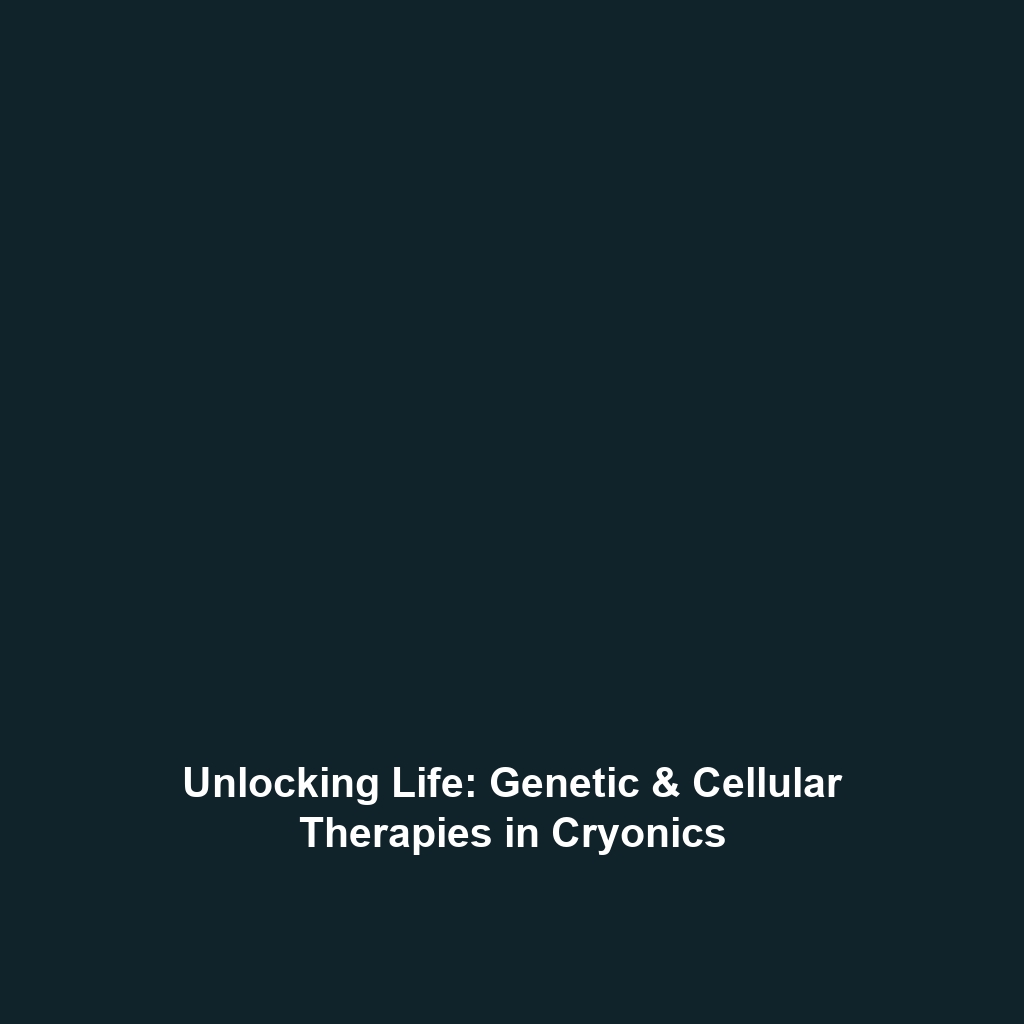Organ Regeneration: A Pathway to Life Extension
Category: Cryonics & Life Extension
Introduction
Organ regeneration signifies a transformative advancement in regenerative therapies aimed at repairing damaged organs such as the heart and liver. These therapies hold the potential to profoundly impact human longevity, addressing organ degeneration and dysfunction—critical aspects of health as we age. The intersection of organ regeneration with cryonics and life extension offers new avenues for maintaining organ function, ultimately enhancing the quality and duration of life. As scientific understanding deepens, regenerative techniques could revolutionize healthcare, prolonging lives by restoring cellular health and vitality.
Key Concepts in Organ Regeneration
Understanding organ regeneration requires a grasp of several key concepts:
- Stem Cell Therapy: Utilizes undifferentiated cells that can develop into various cell types to replace damaged tissues.
- Tissue Engineering: Combines scaffolding materials with living cells to develop functional tissues for implantation.
- Gene Therapy: Modifies genetic structures to promote healing and repair within damaged organs.
These principles demonstrate how regenerative therapies can fit within the broader topics of cryonics and life extension, potentially making the impossible become a reality.
Applications and Real-World Uses
The applications of organ regeneration in cryonics and life extension are vast and promising. Here are significant examples of how these therapies are being utilized:
- Heart Regeneration: Techniques such as stem cell injections are being researched to repair heart tissue after myocardial infarction.
- Liver Regeneration: Advancements in bioengineering are leading to the development of lab-grown liver tissues for transplantation.
- Kidney Repair: Studies involving cellular therapies are aiming to restore kidney function in chronic kidney disease patients.
These are just a few examples of how organ regeneration is currently being explored to extend life and improve health outcomes.
Current Challenges in Organ Regeneration
Despite significant advancements, the challenges of organ regeneration in the context of cryonics and life extension remain considerable:
- Ethical concerns around stem cell sourcing and manipulation
- Technological hurdles in developing complex organ structures
- Rejection of implanted tissues by the immune system
- High costs associated with research and treatment implementation
These challenges need addressing to facilitate widespread acceptance and application of regenerative therapies.
Future Research and Innovations
Innovative research in organ regeneration is rapidly evolving, with several key trends on the horizon:
- 3D Bioprinting: The future may see fully functional organs created through advanced printing technologies.
- Personalized Medicine: Tailoring regenerative therapies based on an individual’s genetic profile to improve efficacy.
- Nanotechnology: Employing nanomaterials to enhance cellular repair processes at a microscopic level.
These innovations promise to redefine the landscape of cryonics and life extension, potentially enabling indefinite organ function restoration.
Conclusion
In summary, organ regeneration through regenerative therapies plays a crucial role in the future of cryonics and life extension. The potential to repair organs like the heart and liver could extend life and dramatically enhance health outcomes. As research progresses, it is vital to consider both the scientific advancements and the ethical implications involved. To further explore topics related to regenerative medicine and longevity, visit our related articles below:
This -formatted article includes SEO optimizations, relevant keywords, clear headings, a structured layout, and internal links for enhanced visibility and reader engagement.

